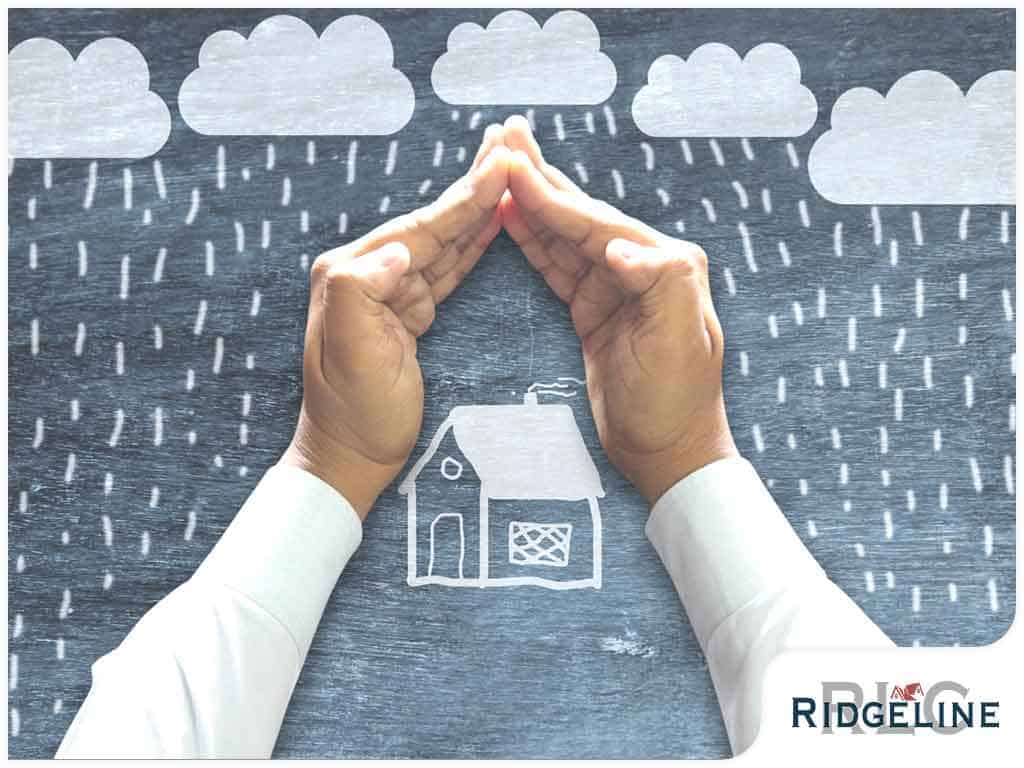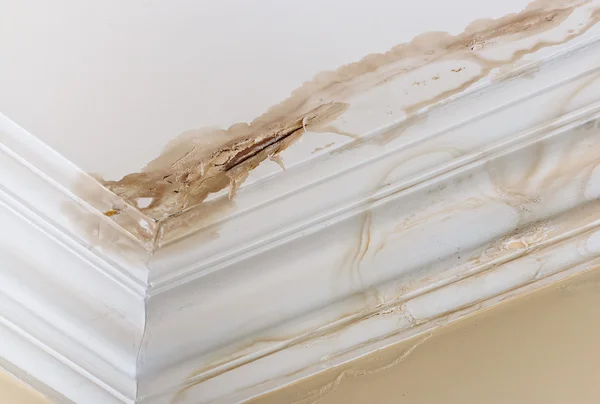-
Table of Contents
- Common Roofing Materials and Their Vulnerability to Leaks
- How to Identify and Repair Common Roof Leaks
- The Benefits of Regular Roof Maintenance to Prevent Leaks
- How to Spot Early Signs of Roof Leaks Before They Become Serious
- The Most Common Causes of Roof Leaks and How to Avoid Them
- How to Choose the Right Roofing Materials to Reduce the Risk of Leaks
- Conclusion
Common Roofing Materials and Their Vulnerability to Leaks
Regarding roofing materials, there are various options available to homeowners. Each material has unique advantages and disadvantages, including its vulnerability to leaks. Understanding the different roofing materials and their susceptibility to leaks can help you make an informed decision when selecting a roof for your home.
Asphalt shingles are one of the most popular roofing materials due to their affordability and ease of installation. Asphalt shingles are relatively resistant to leaks but can be vulnerable to damage from hail, wind, and other extreme weather conditions. If the shingles become cracked or broken, they can allow water to seep in and cause leaks.
Clay and concrete tiles are other popular roofing materials. They are highly durable and resistant to leaks but can be expensive and difficult to install. Clay and concrete tiles are also heavy and may require additional structural support.
Metal roofing is becoming increasingly popular due to its durability and energy efficiency. Metal roofs are highly resistant to leaks but can be vulnerable to rust and corrosion if improperly maintained.
Slate is a natural stone material that is highly durable and resistant to leaks. However, it is also costly and difficult to install.
Wood shingles are a traditional roofing material that is still popular today. Wood shingles are relatively resistant to leaks but can be vulnerable to rot and insect damage if improperly installed or poorly maintained.
Finally, rubber roofing is a relatively new material that is becoming increasingly popular due to its durability and affordability. Rubber roofs are highly resistant to leaks but can be vulnerable to punctures and tears if improperly maintained.
No matter which roofing material you choose, inspect regularly to ensure it is in good condition and not vulnerable to leaks. By understanding the different roofing materials and their susceptibility to leaks, you can make an informed decision when selecting a roof for your home.

How to Identify and Repair Common Roof Leaks
Roof leaks can be a major headache for homeowners. Not only can they cause damage to your home, but they can also be challenging to identify and repair. Fortunately, there are some steps you can take to locate and repair common roof leaks.
The first step in identifying a roof leak is looking for signs of water damage, including water stains on the ceiling, peeling paint, mold, and mildew. If you notice any of these signs, take action quickly, as it can prevent further damage.
Once you’ve identified the source of the leak, you can begin to repair it. The most common cause of roof leaks is a damaged or missing shingle. If this is the case, you must replace the shingle with a new one. You can purchase shingles at most home improvement stores.
If the leak comes from a crack or hole in the roof, you must patch it with a roofing sealant purchased at most home improvement stores. Once the adhesive is applied, it should dry completely before applying a second coat.
Finally, if the leak is coming from a pipe or vent, you’ll need to inspect the area for any signs of damage. If you find any, you’ll need to replace the damaged parts with the help of a professional roofer.
By following these steps, you can identify and repair common roof leaks. Doing so can help prevent further damage to your home and save you money in the long run.
The Benefits of Regular Roof Maintenance to Prevent Leaks
Regular roof maintenance is essential to prevent leaks and ensure the longevity of your roof. Leaks can cause severe damage to your home, leading to costly repairs and even health risks. Inspecting and maintaining your roof can save you money and hassle in the long run.
The first step in roof maintenance is to inspect your roof for any signs of damage. Look for missing, cracked, or curled shingles and any signs of water damage. If you notice any of these issues, you must address them immediately. If left unchecked, these issues can lead to more severe problems.
It’s also essential to clean your roof regularly. Leaves, dirt, and other debris can accumulate on your top and cause damage over time. Periodically cleaning your roof will help to prevent this buildup and keep your roof in good condition.
Finally, you must check your roof for any signs of wear and tear. Look for any loose or missing nails or signs of rust or corrosion. If you notice any of these issues, addressing them is essential.
By taking the time to inspect and maintain your roof, you can prevent leaks and extend the life of your roof. Regular roof maintenance can save you a lot of money and hassle in the long run, so it’s essential to prioritize it.
How to Spot Early Signs of Roof Leaks Before They Become Serious
Awareness of the early signs of roof leaks is essential before they become serious. If you can spot the signs early, you can take steps to prevent further damage and save yourself time and money. Here are some of the most common symptoms of roof leaks that you should look out for:
- Water Stains: Water stains on the ceiling or walls of your home are one of the most common signs of a roof leak. If you notice any discoloration or water spots, it is essential to look into it more.
- Mold or Mildew: Mold and mildew indicate a roof leak. If you notice any mold or mildew in your home, it is essential to have it checked out by a professional.
- Peeling Paint: Peeling paint is another sign of a roof leak. If you notice any peeling or bubbling color, it is essential to have it checked out.
- Sagging Roof: If your roof is sagging or drooping, it could indicate a roof leak. It is essential to have it checked out by a professional.
- Missing Shingles: Missing shingles can indicate a roof leak. If you notice any missing shingles, replace them immediately.
By being aware of these early signs of roof leaks, you can prevent further damage and save time and money. If you notice any of these signs, having them checked out by a professional as soon as possible is very important.
The Most Common Causes of Roof Leaks and How to Avoid Them
Roof leaks can be a major headache for homeowners. Not only can they cause costly damage to your home, but they can also be challenging to diagnose and repair. Fortunately, you can be aware of some common causes of roof leaks and take steps to avoid them.
The most common cause of roof leaks is poor installation. A faulty roof can lead to gaps and cracks that allow water to seep in. To avoid this, hire a reputable, experienced roofing contractor who can install roofs. Ask for references and check their credentials before hiring them.
Another common cause of roof leaks is poor maintenance. If your roof is regularly inspected and maintained, it can be protected from cracks and gaps, allowing water to enter your home. To avoid this, please ensure you have your roof inspected at least once a year and have any necessary repairs done as soon as possible.
Weather can also be a major cause of roof leaks. High winds, heavy rain, and hail can all cause damage to your roof. To avoid this, ensure your roof is in good condition and sealed adequately. If you live in an area prone to severe weather, consider investing in a roofing system to withstand extreme conditions.
Finally, clogged gutters can also be a cause of roof leaks. Gutters clogged with leaves and debris can cause water to back up and seep into your roof. To avoid this, make sure you regularly clean your gutters and downspouts.
By being aware of the most common causes of roof leaks and avoiding them, you can help protect your home from costly damage.
How to Choose the Right Roofing Materials to Reduce the Risk of Leaks
The roof is one of the most critical components when protecting your home from the elements. Choosing suitable roofing materials can help reduce the risk of leaks and ensure your home is safe and secure. Here are some tips for selecting appropriate roofing materials to reduce the risk of leaks:
- Consider the Climate: Different roofing materials are better suited for different climates. For example, metal roofing is an excellent choice for areas with high winds and heavy rain, while asphalt shingles are better suited for areas with milder climates.
- Choose Durable Materials: Durable materials such as metal, slate, and tile are more resistant to damage from wind, hail, and other elements. These materials are also more likely to last longer and require less maintenance.
- Look for Quality: When choosing roofing materials, look for quality materials designed to last. Check the manufacturer’s warranty and look for materials rated for the climate in your area.
- Consider the Cost: Roofing materials can vary significantly, so it’s essential to consider your budget. While more expensive materials may be more durable, more affordable options can still provide good protection.
Following these tips can help reduce the risk of leaks and ensure your home is safe and secure. With suitable roofing materials, you can enjoy the peace of mind of a protected home from the elements.
Conclusion
In conclusion, common roofing areas where leaks occur most often are around chimneys, skylights, valleys, and flashing. These areas are prone to leaks due to their exposure to the elements and the fact that they are often the weakest points in the roofing system. Inspecting these areas regularly and repairing any damage as soon as possible is essential to prevent further damage and costly repairs.








